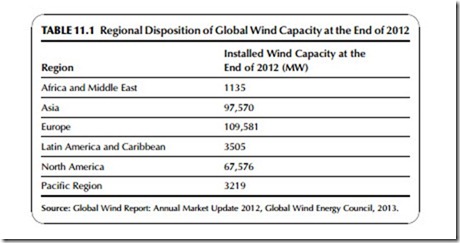Wind power is the second most important renewable source of electric power in the world after hydropower, and since the beginning of the 21st century the total installed capacity has risen rapidly. By the end of 2012 global installed capacity was just under 283,000 MW, around nine times higher than 10 years earlier.1 During this period wind turbines have developed into a mature power genera- tion technology, while at the same time sophisticated means have evolved to manage their intermittent power delivery into national grid systems.
Most of the new capacity during the past decade has been from onshore wind farms but there is also a growing, and increasingly important, offshore wind sec- tor. Most offshore development has been around European coasts but interest is starting to emerge elsewhere too. Building offshore is more expensive than installing wind farms onshore but this can be balanced by a better wind regime, the ability to build larger wind farms incorporating larger turbines, and the greater ease with which planning consent can be acquired for offshore construction.
Table 11.1 shows the disposition of global installed wind capacity at the end of 2012. As the figures in the table indicate, the greatest concentration of wind capacity was in Europe, the region that has been the strongest supporter of renewable energy during the first decade of the 21st century. As the second decade started, Asian capacity, particularly in China and India, was beginning to rise rapidly. This is likely to become the main area for growth during the sec- ond decade. Wind capacity in North America is also high but Africa and South America are notable for their low installed capacities.
The expansion of wind power has resulted in an industry that is global with major manufacturers in Europe, the United States, India, and China. Wind- generated electricity is beginning to prove itself competitive with conventional sources of power generation and can outperform these under circumstances where fossil fuel generation is particularly costly, such as in remote locations. With global competition bringing costs down it is widely predicted that wind power will reach parity with the main conventional sources at some point during the second decade of the century.
